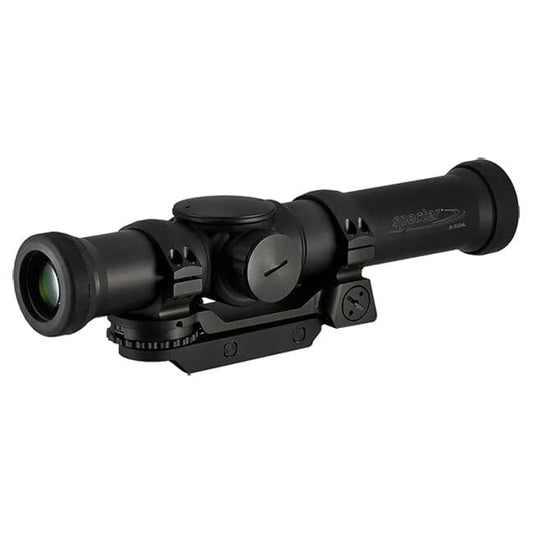

Elcan SpecterTR 139 Tri FOV Sight 5.56 TFOV139-C1 combines a versatile magnification system with robust construction, catering to both tactical operators and sport shooters. With a magnification range of 1x, 3x, and 9x, this scope allows for quick adjustments to suit various shooting scenarios. The illuminated 5.56 ballistic reticle enhances target acquisition, ensuring precision in a range of lighting conditions. Built to withstand harsh environments, this scope provides reliable performance without added weight, making it ideal for extended use in the field.
Weighing just 1.9 lbs, the Elcan SpecterTR is designed for lightweight handling while maintaining the durability expected from military-grade optics. The fixed parallax adjustment offers increased accuracy at multiple distances, and the secure flip-covers keep the lenses safe from dust and scratches. This scope is ready to perform, ensuring you can focus on hitting your target with confidence, whether you are at the range or in the field.
Features:
- VERSATILE MAGNIFICATION for seamless transitions between close-quarters and long-range targets.
- ILLUMINATED RETICLE enhances visibility in low-light settings, improving shot accuracy.
- QUICK DIAL ADJUSTMENT enables rapid changes in magnification for fast-paced shooting scenarios.
- LIGHTWEIGHT DESIGN at only 1.9 lbs, facilitating easy carry without performance compromise.
- DURABLE CONSTRUCTION ensures reliability in challenging conditions, making it suitable for tactical use.
- WIDE FIELD OF VIEW helps maintain situational awareness during engagements.
- FIXED PARALLAX ADJUSTMENT simplifies aiming, enhancing precision across various distances.
- SECURE FLIP-COVERS protect lenses from environmental damage, ensuring clarity and longevity.
Technical Specifications
| Specification | Detail |
|---|---|
| Magnification Range | 1x, 3x, 9x |
| Exit Pupil | 11.7mm |
| Eye Relief | 78.6mm |
| Field of View | 1x-16°, 3x-6°, 9x-2° |
| Weight | 1.9 lbs |
| Scope Length | 10.43" |
| Reticle Details | 5.56 Ballistic Reticle |
| Turret Adjustment (Click Value) | .1 MRAD |
What’s in the Box?
- Elcan SpecterTR 139 Tri FOV Sight
- Lens covers
- Padded case
- User manual
Customer Reviews
"The versatility of this scope is unmatched! Perfect for both my AR and hunting needs." - Jake M.
"I love how quick the magnification changes. It’s a game-changer for precision shooting!" - Sarah L.
FAQ
What makes the Elcan SpecterTR better than traditional scopes? This model offers multiple magnification options in one unit, providing superior flexibility for various shooting distances compared to traditional scopes that typically offer only one magnification level.
How do I maintain my SpecterTR? Regularly clean the lenses with a microfiber cloth and lens cleaning solution. Store it in the included padded case when not in use, and ensure the flip-covers are closed to protect against debris and scratches.
Similar Models
Looking for more top-quality optics? Check out our extensive Elcan collection, including models like the Elcan SpecterDR and Elcan SpecterOS, perfect for enhancing your shooting accuracy and performance. Explore our full range today!
You May Also Like
Here’s some of our most similar products people are buying. Click to discover trending style.







